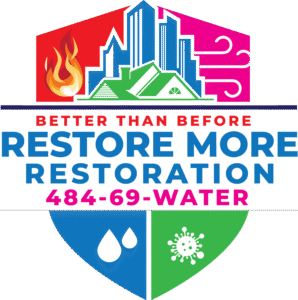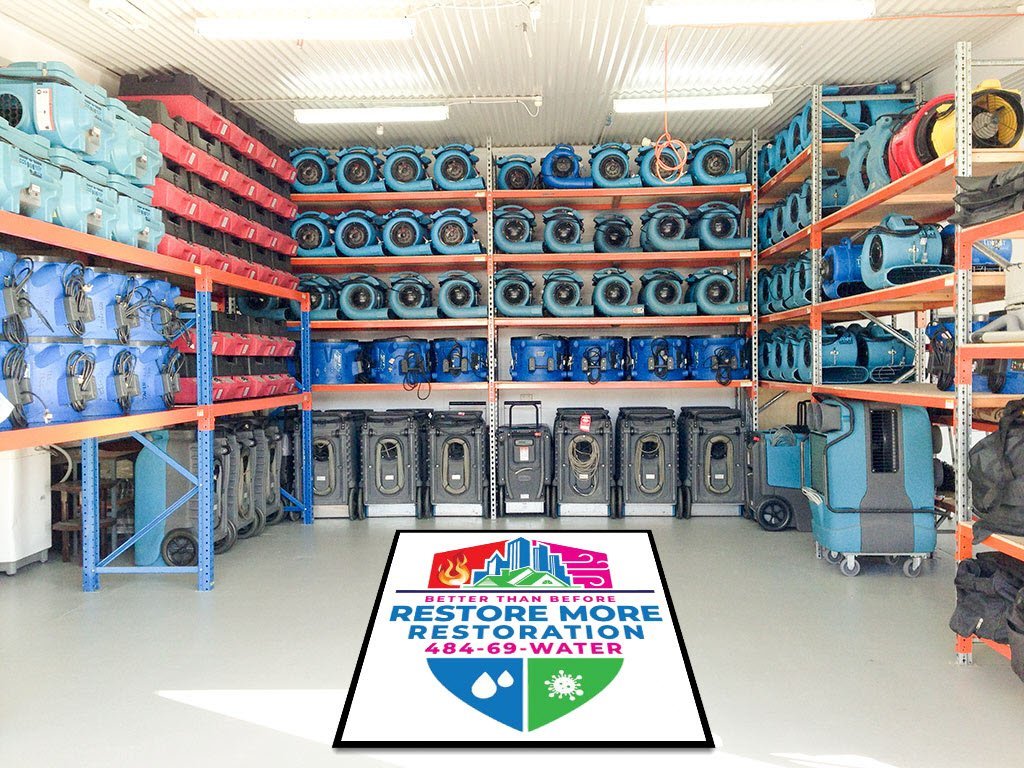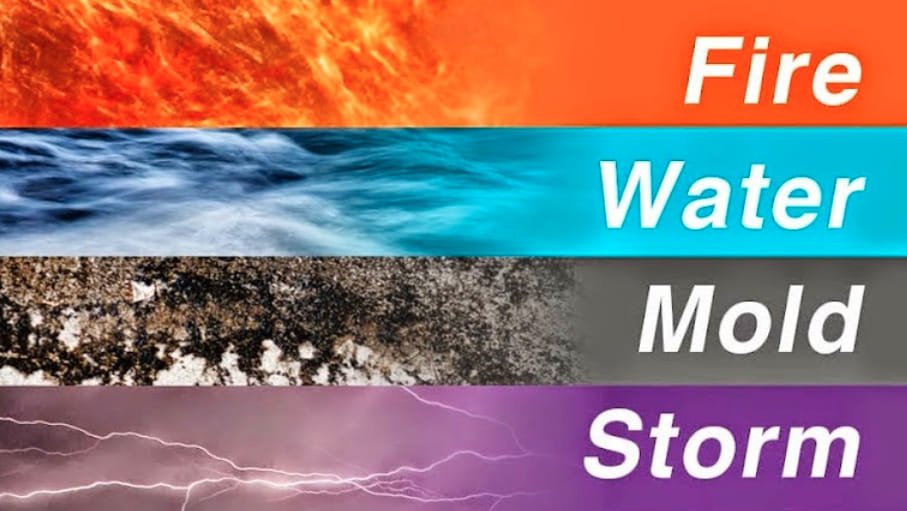Complete Guide to Water Damage Insurance Claims for Garnet Valley Homeowners
Dealing with water damage in your Garnet Valley home is stressful enough without having to navigate the complex world of insurance claims. Understanding your coverage, knowing what documentation is required, and working effectively with insurance adjusters can make the difference between a smooth claims process and months of frustration. Whether you’re dealing with a burst pipe, storm damage, or basement flooding, this comprehensive guide will help you protect your interests and maximize your insurance recovery while ensuring your home is properly restored.
As water damage restoration experts serving Garnet Valley and Delaware County, we’ve worked with hundreds of insurance claims and understand the challenges homeowners face. Our partnership with RestoreMore365 has given us extensive experience in insurance claim documentation and adjuster coordination, and we’re committed to helping our neighbors understand their rights and responsibilities throughout the claims process.
Understanding Water Damage Insurance Coverage
Before filing a claim, it’s essential to understand what types of water damage are covered by your homeowner’s insurance policy and what exclusions may apply. According to the National Association of Insurance Commissioners, understanding your policy terms is crucial for successful claim outcomes.
Covered Water Damage Events
Sudden and Accidental Damage: Most homeowner’s insurance policies cover water damage that is sudden and accidental, such as burst pipes, appliance failures, or roof leaks from storm damage. This coverage typically includes both the cost of repairing the damage and replacing damaged personal property.
Storm-Related Water Damage: Water damage from storms is generally covered when it results from covered perils such as wind damage to roofs or hail damage that allows water intrusion. However, the storm damage must be the direct cause of the water intrusion for coverage to apply.
Plumbing System Failures: Sudden plumbing failures such as burst pipes, water heater failures, or appliance malfunctions are typically covered under standard homeowner’s policies. This includes both the resulting water damage and necessary emergency repairs.
HVAC System Water Damage: Water damage from heating and cooling system failures, including frozen coils, condensate line backups, or equipment malfunctions, is generally covered when the damage is sudden and accidental.
Common Coverage Exclusions
Flood Damage: Standard homeowner’s insurance policies exclude flood damage, which is defined as water that comes from outside the home and affects multiple properties or large areas. Flood damage requires separate flood insurance through the National Flood Insurance Program or private insurers.
Gradual Damage: Damage that occurs gradually over time, such as slow leaks or ongoing moisture problems, is typically excluded from coverage. Insurance policies are designed to cover sudden, accidental events rather than maintenance issues.
Negligence and Maintenance Issues: Damage resulting from homeowner negligence or failure to maintain the property is generally excluded. This includes damage from known leaks that weren’t repaired or preventable maintenance issues.
Sewer and Drain Backups: Many standard policies exclude sewer and drain backups unless specific coverage is added. This coverage is often available as an endorsement for an additional premium.
Policy Limits and Deductibles
Coverage Limits: Understanding your policy limits for dwelling coverage, personal property, and additional living expenses helps set appropriate expectations for claim settlements. Ensure your coverage limits are adequate for current replacement costs.
Deductible Requirements: Know your deductible amount and how it applies to water damage claims. Some policies have separate deductibles for different types of damage, such as wind and hail claims.
Replacement Cost vs. Actual Cash Value: Understand whether your policy provides replacement cost coverage or actual cash value coverage, as this significantly affects claim settlements for damaged property and belongings.
Immediate Steps After Water Damage
Taking the right steps immediately after discovering water damage can significantly impact your insurance claim success and help prevent additional damage.
Safety and Emergency Response
Ensure Safety First: Before documenting damage or contacting insurance, ensure the safety of all occupants. Turn off electricity to affected areas if water is present near electrical outlets or equipment. If structural damage is suspected, evacuate the area until professional assessment can be completed.
Stop the Water Source: If possible, stop the source of water damage by shutting off water supplies, covering roof leaks, or taking other appropriate emergency measures. Insurance policies require policyholders to take reasonable steps to prevent additional damage.
Contact Emergency Services: For severe damage or safety concerns, contact emergency services before beginning documentation or cleanup efforts. Professional emergency response may be necessary for electrical hazards, structural damage, or contaminated water situations.
Begin Emergency Mitigation: Take reasonable steps to prevent additional damage, such as removing standing water, moving belongings to dry areas, and covering damaged areas with tarps. Keep receipts for emergency mitigation expenses as they may be covered by your policy.
Initial Documentation
Photograph Everything: Take extensive photographs and videos of all damage before beginning any cleanup or mitigation efforts. Document water levels, damaged materials, affected belongings, and the source of the damage if visible.
Create Detailed Inventory: Begin creating a detailed inventory of damaged personal property, including descriptions, approximate ages, and estimated values. This documentation will be crucial for personal property claim settlements.
Document the Timeline: Record the date and time damage was discovered, when the water source was stopped, and what emergency measures were taken. This timeline helps establish the scope and progression of damage.
Preserve Evidence: Preserve evidence of the damage cause when possible, such as failed appliance parts or damaged plumbing components. This evidence may be important for determining coverage and claim settlements.
Filing Your Insurance Claim
Contacting Your Insurance Company
Report Claims Promptly: Contact your insurance company as soon as possible after discovering damage. Most policies require prompt notification, and delays in reporting can complicate claims processing.
Provide Initial Information: Be prepared to provide basic information about the damage, including the date of loss, cause of damage, and general scope of damage. Avoid speculating about causes or making detailed damage estimates during initial reporting.
Request Claim Number: Obtain a claim number and the contact information for your assigned adjuster. Keep this information readily available for all future communications about your claim.
Understand the Process: Ask about your insurance company’s claims process, including timelines for adjuster contact, inspection scheduling, and claim resolution. Understanding the process helps set appropriate expectations.
Working with Insurance Adjusters
Adjuster Inspection Preparation: Prepare for the adjuster’s inspection by organizing your documentation, creating a list of questions, and ensuring access to all damaged areas. The adjuster’s inspection is crucial for claim evaluation.
Accompany the Adjuster: Accompany the adjuster during their inspection to point out all damage and answer questions about the loss. This ensures that all damage is identified and properly documented.
Provide Complete Documentation: Provide the adjuster with all documentation you’ve gathered, including photographs, videos, receipts, and inventory lists. Complete documentation supports accurate claim evaluation.
Ask Questions: Don’t hesitate to ask questions about coverage, the claims process, or the adjuster’s findings. Understanding the adjuster’s assessment helps you advocate for fair claim settlement.
Professional Restoration Documentation
Restoration Company Coordination: Professional restoration companies like RestoreMore365 can provide valuable assistance with insurance claim documentation and adjuster coordination. Their experience with insurance claims helps ensure proper documentation and fair settlements.
Detailed Damage Assessment: Professional restoration companies provide detailed damage assessments that support insurance claims. Their technical expertise helps identify all damage, including hidden problems that may not be apparent to untrained observers.
Scope of Work Development: Professional restoration companies develop detailed scopes of work that outline all necessary repairs and restoration activities. These scopes help ensure that insurance settlements cover all necessary work.
Ongoing Communication: Professional restoration companies maintain ongoing communication with insurance adjusters throughout the claims process, providing updates on damage discovery and restoration progress.
Documentation Requirements
Damage Documentation
Photographic Evidence: Take comprehensive photographs of all damage from multiple angles and distances. Include wide shots showing the overall scope of damage and close-up shots showing specific damage details.
Video Documentation: Create video walkthroughs of damaged areas, narrating what you’re showing and explaining the extent of damage. Video documentation can capture details that photographs might miss.
Written Descriptions: Provide written descriptions of all damage, including locations, materials affected, and estimated extent of damage. Written descriptions supplement visual documentation and provide additional detail.
Professional Assessments: Obtain professional assessments from qualified contractors or restoration companies. Professional assessments provide technical expertise and credibility for insurance claim documentation.
Personal Property Documentation
Detailed Inventory: Create a detailed inventory of all damaged personal property, including descriptions, brands, models, ages, and estimated replacement costs. Organize inventory by room or category for easier review.
Purchase Documentation: Gather purchase receipts, warranties, and other documentation for damaged items when available. Original purchase documentation provides the best evidence of item value and age.
Replacement Cost Research: Research current replacement costs for damaged items to support claim settlements. Online retailers and manufacturer websites provide current pricing information for replacement cost calculations.
Professional Appraisals: Consider professional appraisals for high-value items such as jewelry, artwork, or antiques. Professional appraisals provide authoritative value documentation for insurance purposes.
Expense Documentation
Emergency Mitigation Costs: Keep receipts for all emergency mitigation expenses, including water extraction, temporary repairs, and emergency supplies. These costs may be covered under your policy’s emergency mitigation provisions.
Additional Living Expenses: Document all additional living expenses if your home becomes uninhabitable, including hotel costs, restaurant meals, and other necessary expenses. Most policies provide coverage for reasonable additional living expenses.
Professional Service Costs: Keep receipts for all professional services related to damage assessment, cleanup, and restoration. Professional service costs are typically covered when the underlying damage is covered.
Communication Records: Maintain records of all communications with your insurance company, including phone calls, emails, and written correspondence. Communication records help track claim progress and resolve disputes.
Common Claim Challenges and Solutions
Coverage Disputes
Cause of Loss Disputes: Insurance companies may dispute the cause of water damage to avoid coverage. Professional restoration companies can provide technical expertise to support covered cause determinations.
Gradual Damage Claims: Insurers often claim that damage was gradual rather than sudden to deny coverage. Proper documentation and professional assessment can help establish the sudden nature of damage.
Maintenance vs. Covered Loss: Insurance companies may claim that damage resulted from maintenance issues rather than covered perils. Professional documentation can help distinguish between covered losses and maintenance issues.
Scope of Damage Disputes: Adjusters may underestimate the scope of damage to minimize claim settlements. Professional restoration assessments provide technical expertise to support complete damage documentation.
Settlement Negotiations
Inadequate Settlement Offers: Initial settlement offers may not cover all necessary repairs and restoration. Professional restoration estimates provide documentation to support fair settlement negotiations.
Depreciation Disputes: Insurance companies may apply excessive depreciation to damaged materials and belongings. Understanding your policy’s replacement cost provisions helps advocate for fair settlements.
Hidden Damage Discovery: Additional damage discovered during restoration work may require supplemental claims. Professional restoration companies help document and support supplemental claim requests.
Code Upgrade Requirements: Building code upgrades required during restoration may not be covered without specific policy provisions. Understanding your policy’s ordinance and law coverage helps address upgrade costs.
Professional Advocacy
Public Adjuster Services: Consider hiring a public adjuster for complex or disputed claims. Public adjusters work for policyholders rather than insurance companies and can provide professional claim advocacy.
Legal Consultation: Consult with insurance attorneys for claims involving significant disputes or bad faith issues. Legal consultation helps protect your rights and interests in complex claim situations.
Professional Restoration Advocacy: Professional restoration companies provide ongoing advocacy throughout the claims process, helping ensure fair treatment and appropriate settlements.
Working with Professional Restoration Companies
Benefits of Professional Restoration
Insurance Claim Expertise: Professional restoration companies have extensive experience working with insurance claims and understand the documentation and communication requirements for successful claim outcomes.
Technical Damage Assessment: Professional restoration companies provide technical expertise in damage assessment that supports accurate claim evaluation and fair settlements.
Emergency Response Capability: Professional restoration companies provide immediate emergency response that helps minimize damage and demonstrates compliance with policy mitigation requirements.
Complete Restoration Services: Professional restoration companies provide complete restoration services from emergency mitigation through final reconstruction, simplifying the claims process and ensuring quality outcomes.
Choosing the Right Restoration Company
Insurance Experience: Choose restoration companies with extensive insurance claim experience and established relationships with insurance adjusters and companies.
Local Knowledge: Select restoration companies with local knowledge of Garnet Valley and Delaware County conditions, building codes, and permit requirements.
Licensing and Certification: Ensure restoration companies are properly licensed and certified for work in Pennsylvania and carry appropriate insurance coverage.
References and Reviews: Check references and reviews from other customers who have worked with the restoration company on insurance claims.
Restoration Company Services
Emergency Mitigation: Professional restoration companies provide immediate emergency mitigation services that help minimize damage and comply with insurance policy requirements.
Damage Documentation: Professional restoration companies provide detailed damage documentation that supports insurance claims and ensures complete damage identification.
Adjuster Coordination: Professional restoration companies coordinate directly with insurance adjusters to provide technical information and support claim evaluation.
Complete Restoration: Professional restoration companies provide complete restoration services that return properties to pre-loss condition or better while working within insurance claim parameters.
Special Considerations for Garnet Valley Properties
Local Risk Factors
Brandywine Creek Watershed: Properties in the Brandywine Creek watershed may face flood risks that require separate flood insurance coverage. Understanding flood zone designations helps determine appropriate coverage needs.
Aging Infrastructure: Many Garnet Valley properties feature aging plumbing and building systems that may be more susceptible to failures. Understanding age-related coverage limitations helps set appropriate expectations.
Seasonal Weather Patterns: Delaware County’s seasonal weather patterns create specific risks for ice dams, frozen pipes, and storm damage. Understanding seasonal risks helps with both prevention and claim preparation.
Building Code Requirements: Local building codes and permit requirements may affect restoration costs and timelines. Professional restoration companies understand local requirements and help navigate compliance issues.
Local Insurance Considerations
Regional Insurance Companies: Some insurance companies have better reputations for claim handling in the Delaware County area. Understanding local insurance company performance helps with both coverage selection and claim expectations.
Local Adjuster Networks: Insurance companies often use local adjuster networks for claim handling. Professional restoration companies understand local adjuster practices and can provide effective coordination.
Contractor Networks: Some insurance companies maintain preferred contractor networks for restoration work. Understanding these networks helps with restoration company selection and claim coordination.
Regional Coverage Variations: Insurance coverage and claim handling practices may vary by region. Understanding local practices helps set appropriate expectations and advocacy strategies.
Maximizing Your Claim Settlement
Preparation Strategies
Complete Documentation: Thorough documentation of all damage and losses provides the foundation for maximum claim settlements. Invest time in complete and accurate documentation.
Professional Assessment: Professional damage assessment provides technical credibility and expertise that supports maximum claim settlements.
Timely Communication: Maintain timely communication with your insurance company and provide requested information promptly to avoid claim delays.
Understand Your Rights: Understand your rights as a policyholder and don’t accept inadequate settlements without proper evaluation and advocacy.
Negotiation Tactics
Professional Support: Use professional restoration companies and public adjusters to provide expertise and advocacy during settlement negotiations.
Comparable Cost Documentation: Provide documentation of comparable repair and replacement costs to support settlement negotiations.
Policy Provision Knowledge: Understand your policy provisions and use them to advocate for fair settlements that comply with policy terms.
Persistence and Patience: Claim settlement negotiations may take time and persistence. Don’t accept inadequate settlements without proper advocacy and negotiation.
Settlement Evaluation
Complete Scope Coverage: Ensure that settlements cover the complete scope of necessary repairs and restoration work.
Quality Standards: Ensure that settlements provide for quality materials and workmanship that return your property to pre-loss condition or better.
Code Compliance: Ensure that settlements address any building code compliance requirements triggered by restoration work.
Future Protection: Consider whether settlements provide opportunities for improvements that reduce future damage risks.
Preventing Future Claim Issues
Maintenance Documentation
Regular Maintenance Records: Maintain detailed records of regular home maintenance to demonstrate proper property care and support future claim coverage.
Professional Inspection Records: Keep records of professional inspections and maintenance to provide evidence of proper property care.
Improvement Documentation: Document home improvements and upgrades that may affect insurance coverage or claim settlements.
System Monitoring: Implement monitoring systems that provide early warning of potential problems and demonstrate proactive property management.
Policy Review and Updates
Annual Policy Review: Review your insurance policy annually to ensure adequate coverage for current property values and replacement costs.
Coverage Enhancements: Consider coverage enhancements such as sewer backup coverage, ordinance and law coverage, and increased personal property limits.
Deductible Evaluation: Evaluate your deductible levels to balance premium costs with claim settlement impacts.
Flood Insurance Consideration: Consider flood insurance even if not required, as flood damage is excluded from standard homeowner’s policies.
Conclusion
Successfully navigating water damage insurance claims requires understanding your coverage, proper documentation, effective communication with adjusters, and often professional advocacy and support. By following the strategies outlined in this guide, Garnet Valley homeowners can protect their interests and maximize their insurance recovery while ensuring proper restoration of their homes.
Remember that insurance claims can be complex and time-consuming, but with proper preparation and professional support, you can achieve fair settlements that fully address your losses. Don’t hesitate to seek professional help when needed, as the expertise and advocacy provided by qualified restoration companies and other professionals can make a significant difference in claim outcomes.
For more information about water damage restoration and insurance claim support, visit our comprehensive guides on water damage restoration, emergency water damage response, basement water damage, flood restoration, and storm damage cleanup. These resources provide detailed information about both restoration services and insurance claim coordination available to Garnet Valley residents.
Your insurance policy is designed to protect you from financial losses due to covered damage. Understanding your rights and responsibilities as a policyholder helps ensure that you receive the protection you’ve paid for when water damage affects your home.




